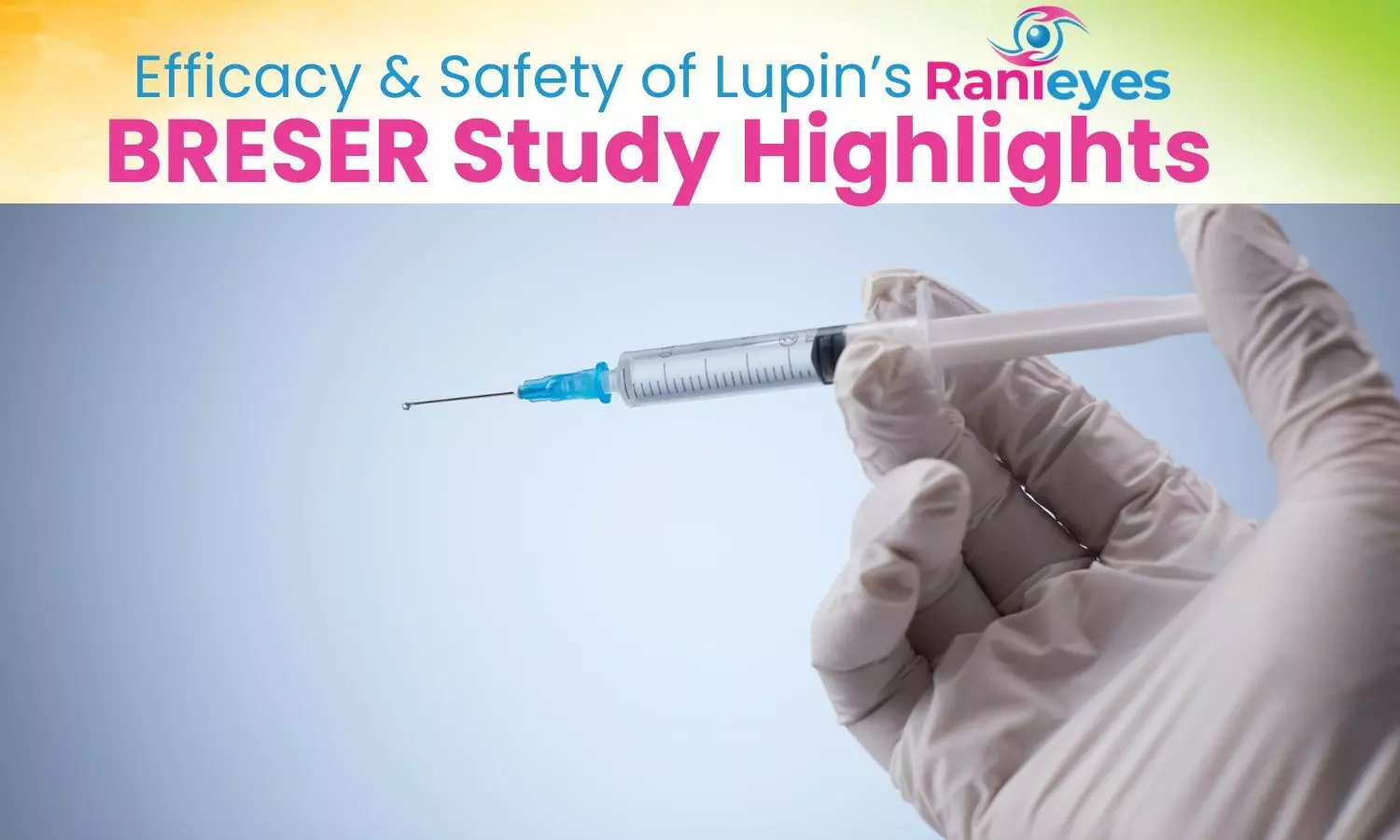BRESER Study Demonstrates Real-World Efficacy and Safety of Lupin’s Ranibizumab Biosimilar (Ranieyes)

Ranieyes is the Ranibizumab Biosimilar
which is an Indian Ranibizumab Biosimilar manufactured by Lupin Ltd & approved in India for various indications such as retinal
vein occlusion (RVO), neovascular age-related macular degeneration (nAMD), myopic macular neovascularization (MNV), and Diabetic macular edema (DME). Ranieyes is an anti-VEG
intravitreal injection available in the Indian market since 2021. It has
been developed as a biosimilar to reference product Lucentis and it has been
found to be safe and well tolerated, biosimilarity being demonstrated through
quality/analytical & pragmatic clinical trial studies.
Recently, the BRESER Study, by Dr. Ashish
Sharma et. al, has been published in the Journal of Vitreo
Retinal Diseases, a peer-reviewed journal of the American Society of Retina
Specialists (ASRS).
BRESER Study is a real-world,
multicenter, uncontrolled, observational study across 7 eye
care centers in India.
A total of 474 ranibizumab
biosimilar injections were administered to 268 eyes of 254 patients. The study included patients who
received at least one 0.5 mg IVT injection of Ranieyes to evaluate its
effectiveness and safety. The treatment was given for diabetic macular edema
(DME) (n = 112), macular neovascularization (MNV) (n = 92), retinal vein
occlusion (RVO) (n = 54), cystoid macular edema (CME) (n = 4), and
proliferative diabetic retinopathy (PDR) with vitreous hemorrhage (n = 6). The
mean follow-up duration was 7.7 ± 5.4 weeks.
The results revealed findings which include:
- Significant
improvement in mean logMAR BCVA (Best-Corrected Visual Acuity) (±SD) was
observed from baseline to the last follow-up as follows: - In diabetic macular edema (DME) cases, improvement
was observed from 0.77 ± 0.37 (6/36) to
0.43 ± 0.25 (6/15) - In macular neovascularization (MNV) cases, improvement was recorded from 0.95 ± 0.53 (6/60) to 0.59 ± 0.42 (6/24)
- In retinal vein occlusion (RVO) cases, improvement
was noted from 0.83 ± 0.40 (6/45) to
0.44 ± 0.32 (6/15). - In PDR (Proliferative
Diabetic Retinopathy) cases with vitreous haemorrhage, mean logMAR BCVA
improved from 0.71 ± 0.54 (6/30) to 0.28 ± 0.37 (6/12), though this change was
not statistically significant. - Significant
reductions in central subfield thickness (CST) were noted: - The CST improved significantly overall (z =
−13.3; r = −0.8) and in the DME group (z = −8.3; r = −0.8), MNV group (z =
−7.8; r = −0.8), and RVO group. - In eyes with PDR and a vitreous hemorrhage,
the overall mean CST at baseline was 341.6 ± 183.7 μm, improving to 229.5 ±
25.3 μm. - In cystoid macular edema (CME) cases, mean CST decreased from 325.5 ± 50.9 μm to 251 ±
65 μm, but the difference was not statistically significant.
- The study noted significant improvements in
BCVA and CST in terms of efficacy, while none of the seven study sites reported
inflammation, vasculitis, vision loss, or other systemic drug-related adverse
events. - The findings
of this preliminary real-world study corroborate
the clinical efficacy and safety of Ranieyes as a ranibizumab biosimilar across
the approved indications, based on clinical evidence.
Today we have Dr. Ashish Sharma with us we will discuss some questions related to the
study:
- How common are retinal diseases like diabetic macular
edema and macular neovascularization? - How do the BCVA and CST improvements seen in the BRESER
study reflect in daily practice? - Advice for young ophthalmologist on how to approach the
use of biosimilars like Ranieyes - How do biosimilars like Ranieyes help in making treatment
more affordable for patients in India? - Are more
Indian real-world studies like BRESER important for doctors?
Reference:
1) Sharma A, Holz FG, Kumar N, et al. Biosimilar Ranibizumab (Ranieyes) Safety and Efficacy in the Real World: BRESER Study. Journal of VitreoRetinal Diseases. 2025;0(0). doi:10.1177/24741264251322213
